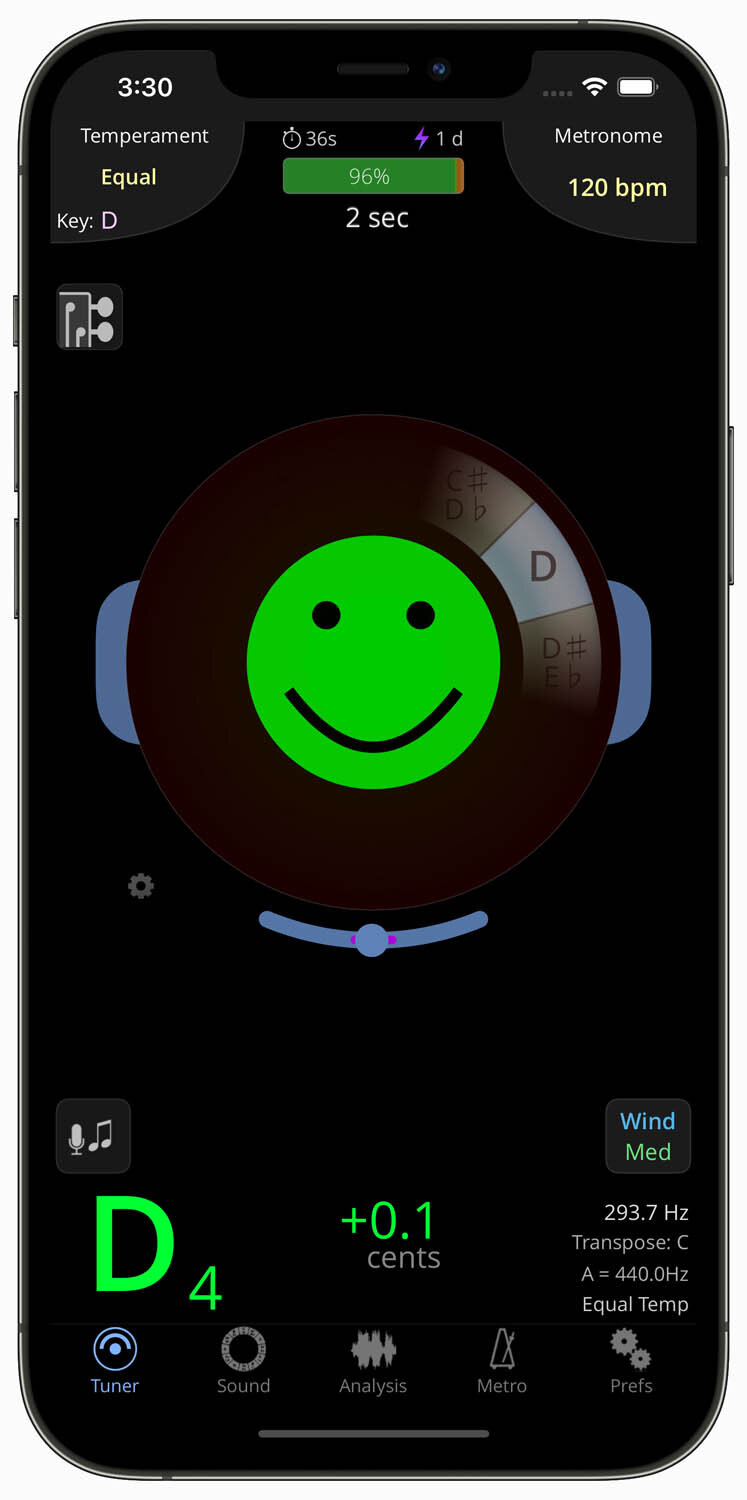Music is a beautiful language, but like any language, it relies on clear communication. Just like people speaking the same language can do so with different accents to their voice so too can musicians play the same note but with slight changes in the way it sounds. The pitch may be a bit high or a bit low, and over the centuries musicians have come up with ways to analyze these differences so that multiple musicians can better "play in tune." Just as proper grammar and pronunciation are essential for understanding spoken words, playing in tune is paramount for creating harmonious music. This is where the tuner comes in. For the beginner (or even the more advanced musician) it can be a vital tool for developing accuracy of pitch.
So, why is using a tuner so important when learning an instrument?
- Developing a Strong Sense of Pitch: A tuner provides an objective reference point for correct pitch. By consistently matching notes to the tuner's reading, beginners train their ears to recognize intonation and internalize the aural qualities of each note. This skill is crucial for playing both solo and in an ensemble setting. Simply tuning one note at the beginning of practice and adjusting a tuning slide or joint on an instrument may help that one note to be better in tune, but there are always other notes on the instrument that simply changing the tuning slide won't fix by itself. Using a tuner helps you realize when a specific note is not playing at the correct frequency.
- Overcoming Reliance on Reference Notes: In the early stages of learning, many instruments rely on "reference notes" produced by open strings or specific fingerings. While these are helpful starting points, a tuner allows students to move beyond them, fostering independence and the ability to play any note accurately.
- Building Confidence in Playing: Playing in tune is undeniably satisfying. When beginners can consistently produce clear, accurate notes with the help of a tuner, their confidence soars. This positive reinforcement encourages them to keep practicing and striving for improvement.
- Identifying and Correcting Intonation Issues: Instruments can go out of tune for various reasons, such as temperature changes or slightly misaligned keys. A tuner quickly identifies these discrepancies, allowing players to make adjustments and maintain optimal sound quality.
- Promoting Consistent Practice Habits: Integrating the tuner into regular practice sessions establishes a routine of focused listening and pitch awareness. This consistency is vital for developing a strong foundation in musicianship.
Tuners: A User-Friendly Guide
The good news is that tuners are readily available and easy to use. Here's a quick guide to get you started:
- Choose Your Tuner: These days simply loading a tuner app on your phone is all you need to do. Although it costs a few bucks the best one in the author's opinion is called Tonal Energy Tuner and is available for both iOS and Android. However, physical clip-on tuners that can attach directly to the bell or other parts of the instrument are also popular for their portability and ease of use. Plus, you can't use a tuner app while also using the phone to record your practice or performance. Dedicated electronic tuners often offer additional app like features such as metronomes and visual displays so honestly having a dedicated tuner in addition to the app on your phone is always a good idea.
- Power Up: Turn on your chosen tuner and select the appropriate instrument setting (e.g., trumpet, guitar). This is important! If you play an instrument that isn't pitched in C (Trumpet, Saxophone, Clarinet for example) then the tuner will not display the correct note name that you are playing.
- Play a Note: Play a single note on your instrument clearly and steadily. If you are on a wind instrument use plenty of air in a strong steady stream.
- Match the Pitch: The tuner will display the note you played and indicate whether it's sharp (too high) or flat (too low). Adjust your playing to match the tuner's reading.
- Repeat and Refine: Repeat this process for each note on your instrument until you can consistently produce accurate pitches. Make a chart of which notes on your instrument need to be adjusted and work toward fixing those automatically as you play.
Tuners: Not a Replacement, but a Valuable Tool
It's important to remember that tuners are not a replacement for ear training. The ultimate goal is for musicians to develop the ability to recognize and produce accurate pitch without relying solely on a device. However, tuners act as a supportive guide, providing valuable feedback and accelerating the learning process.
By using a tuner consistently, beginners can build a strong foundation in pitch recognition and intonation. This sets them on the path to becoming confident, well-rounded musicians, ready to express themselves through the beautiful language of music. So, pick up a tuner, embrace the journey of finding your perfect pitch, and enjoy the musical adventure that awaits!

